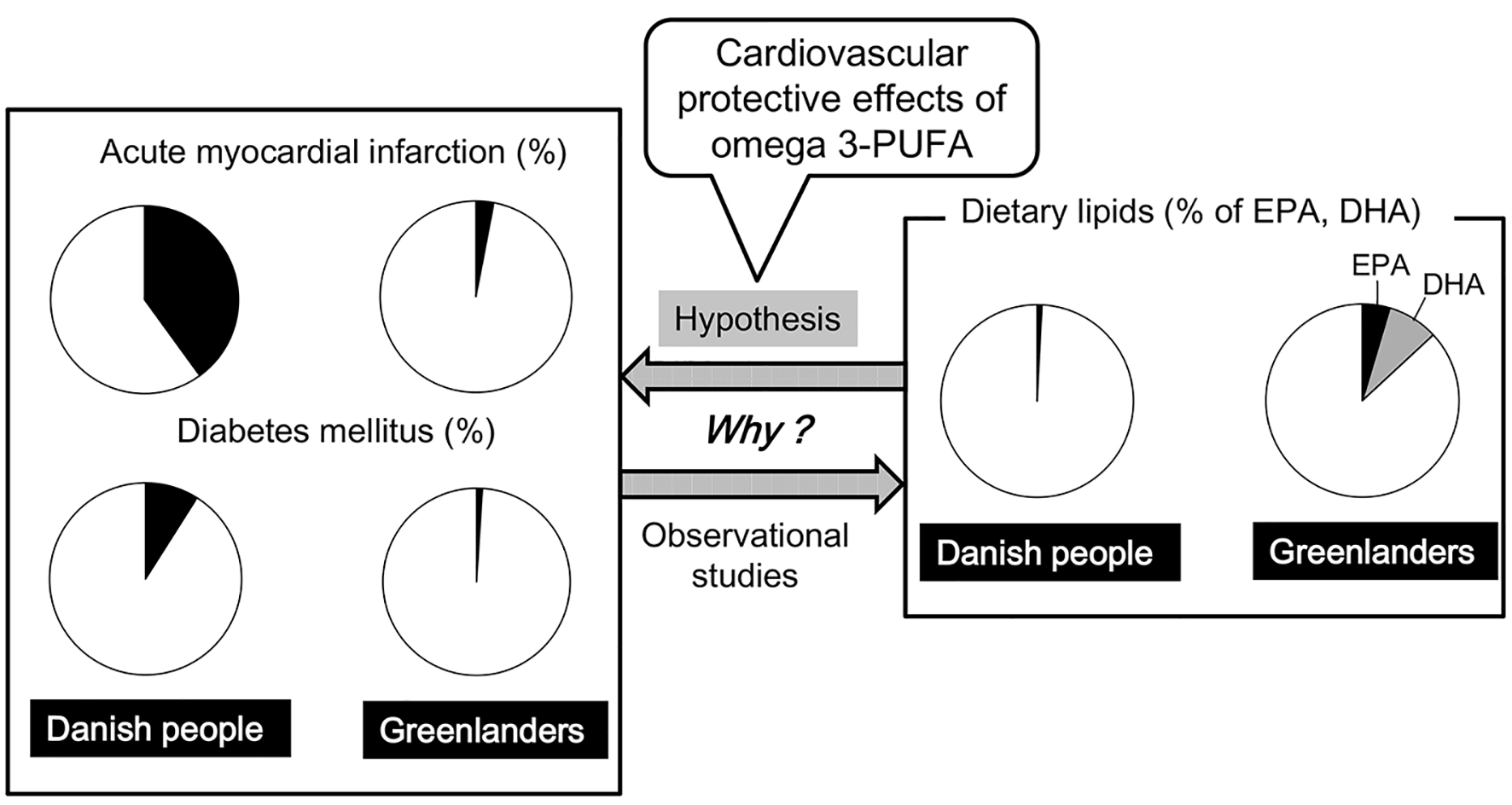
Figure 1. A lower prevalence of acute myocardial infarction and diabetes mellitus in the Greenlanders as compared with the Danish people, and the composition of food consumed by the Danish people and the Greenlanders. DHA: docosahexaenoic acid; EPA: eicosapentaenoic acid; PUFA: polyunsaturated fatty acids.

Figure 2. The possible mechanisms for omega-3 PUFA-mediated improvements in lipid and glucose metabolism. Dash lines indicate direct effects of EPA and DHA, and solid lines indicate secondary changes of metabolic state in lipid/glucose metabolism due to EPA and DHA. C: cholesterol; CM: chylomicron; CM-r: chylomicron remnant; DHA: docosahexaenoic acid; EPA: eicosapentaenoic acid; FFA: free fatty acids; GLP-1: glucagon-like peptide 1; GPR: G protein-coupled receptor; HSL: hormone-sensitive lipase; HTGL: hepatic triglyceride lipase; IDL: intermediate-density lipoprotein (IDL); LDL: low-density lipoprotein; LPL: lipoprotein lipase; PUFA: polyunsaturated fatty acids; SREBP: sterol receptor element binding protein; TG: triglyceride; VLDL: very low-density lipoprotein.

